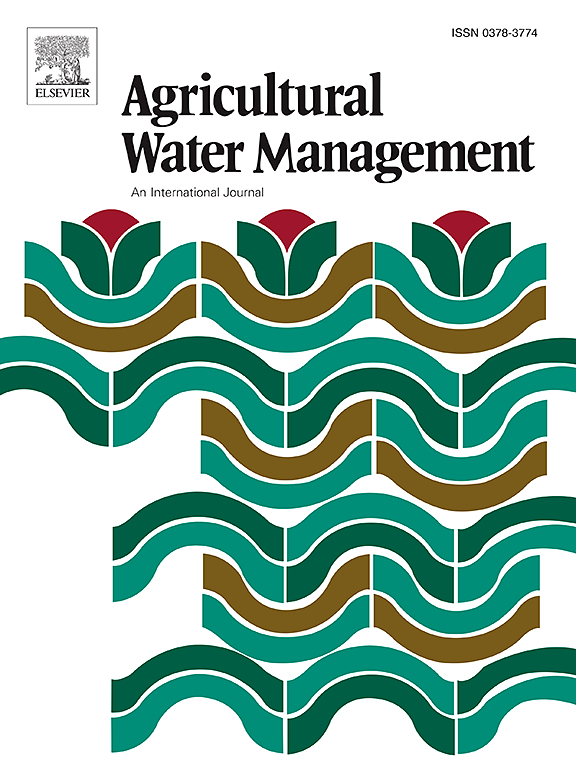中国亚热带-暖温带气候过渡带茶园土壤干旱胁迫的时间演变及其与气候变化的关系
IF 6.5
1区 农林科学
Q1 AGRONOMY
引用次数: 0
摘要
茶(Camellia sinensis (L.))昆策人工林是中国亚热带—暖温带气候过渡带最重要的人工植被类型之一。土壤干旱胁迫是制约茶园生长的重要因素,但其长期演变特征及其与气候变化的关系尚未得到定量分析。本研究采用Biome-BGCMuSo模型对气候过渡带茶园近60年(1961-2020)的生态水文动态进行了模拟。基于土壤干旱指数(AveSDSI),分析了土壤干旱胁迫的长期演变。通过因子模拟和偏相关分析,进一步探讨了AveSDSI年际变化趋势和波动与气候因子的关系。结果表明,Biome-BGCMuSo模型能有效地模拟研究区茶园土壤水分动态。1961—2020年,年和季节AveSDSI均呈增加趋势,春季AveSDSI与时间呈显著的线性关系。全年和春季AveSDSI的11年移动标准差均呈显著增加趋势,表明土壤干旱胁迫的年际波动加剧。因子模拟和偏相关分析表明,水汽压亏缺(VPD)和降水是影响AveSDSI年际变化的主要因子,分别主导了AveSDSI的年际变化趋势和波动。显著的季节差异也很明显。这些研究结果为气候过渡带茶园的优化管理和减灾提供了重要依据。本文章由计算机程序翻译,如有差异,请以英文原文为准。
Temporal evolution of soil drought stress and its relationship with climate change for tea plantations in the subtropical–warm temperate climate transition zone of China
Tea (Camellia sinensis (L.) Kuntze) plantation represents one of the most important artificial vegetation types in the subtropical–warm temperate climate transition zone of China. Soil drought stress is an important factor limiting the growth of tea plantation, but its long-term evolution characteristics and relationship with climate change have yet to be quantitatively analyzed. In this study, we employed the Biome-BGCMuSo model to simulate ecohydrological dynamics over the past 60 years (1961–2020) for tea plantations in the climate transition zone. The long-term evolution of soil drought stress was analyzed based on the annual and seasonal average soil drought stress index (AveSDSI). The relationships between the interannual trends and fluctuations of AveSDSI with climate factors were further examined through factorial simulations and partial correlation analysis, respectively. The results indicated the Biome-BGCMuSo model effectively simulated the soil moisture dynamics in tea plantations in the study area. From 1961–2020, annual and seasonal AveSDSI both exhibited increasing trends, with a significant linear relationship between spring AveSDSI and time. The 11-year moving standard deviation of both annual and spring AveSDSI showed significant increasing trends, indicating intensified interannual fluctuations in soil drought stress. Factorial simulations and partial correlation analysis revealed vapor pressure deficit (VPD) and precipitation were the primary factors influencing the interannual variability of AveSDSI, respectively dominating the interannual trend and fluctuation of annual AveSDSI. Notable seasonal differences were also evident. These findings provide an important foundation for optimizing management and disaster mitigation for tea plantations in the climate transition zone.
求助全文
通过发布文献求助,成功后即可免费获取论文全文。
去求助
来源期刊

Agricultural Water Management
农林科学-农艺学
CiteScore
12.10
自引率
14.90%
发文量
648
审稿时长
4.9 months
期刊介绍:
Agricultural Water Management publishes papers of international significance relating to the science, economics, and policy of agricultural water management. In all cases, manuscripts must address implications and provide insight regarding agricultural water management.
 求助内容:
求助内容: 应助结果提醒方式:
应助结果提醒方式:


